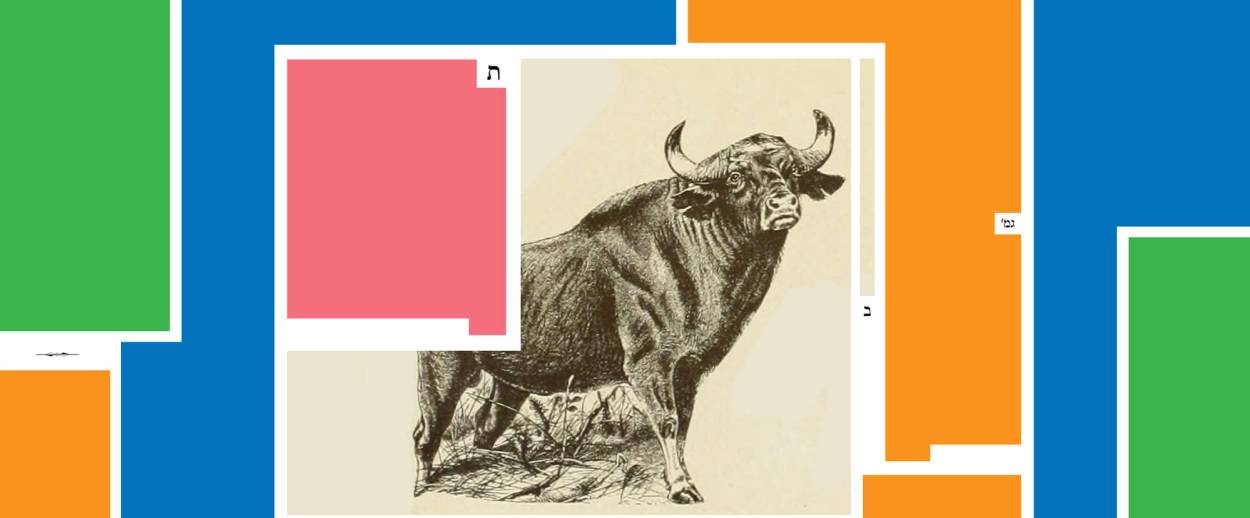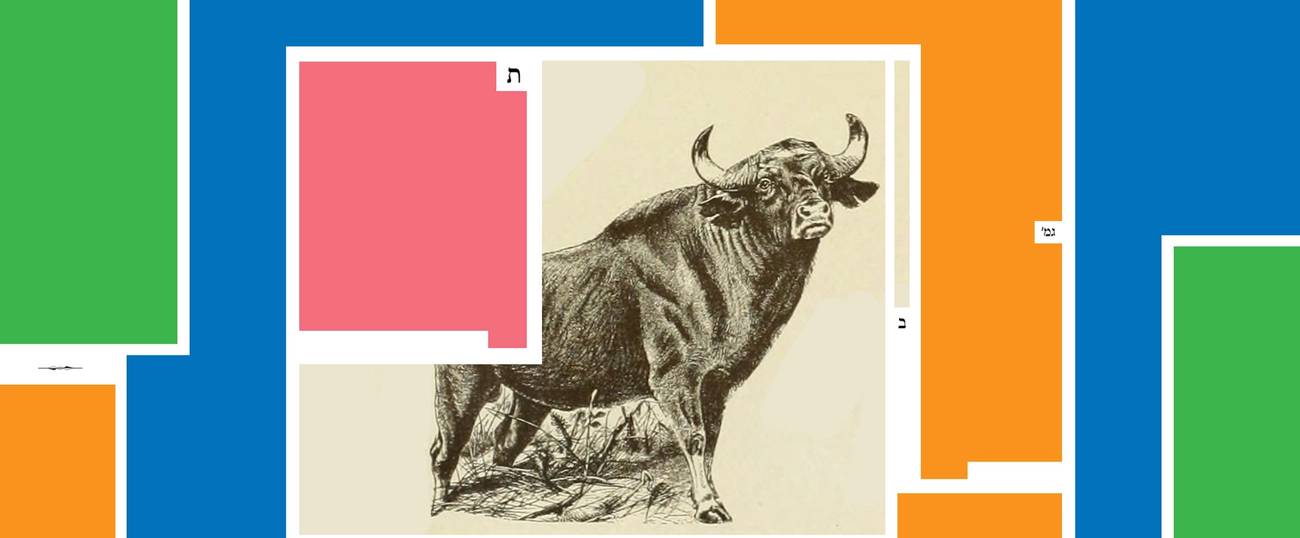Toward a Taxonomy of Damage
The Talmud is what happens when the laws of the Written Torah are not sufficiently broad or abstract to serve as the basis for a functioning legal system




Literary critic Adam Kirsch is reading a page of Talmud a day, along with Jews around the world.
The Babylonian Talmud is composed of six large divisions, known as Sedarim or “Orders.” At the beginning of June, Daf Yomi readers reached a milestone when we began the fourth of the Talmud’s orders, Seder Nezikin, starting with Tractate Bava Kamma. The word nezikin means “damages,” and this seder covers all situations in which one person damages another—which is to say, almost all the reasons why one Jew would bring another Jew to court. This makes it significantly different from the two complete sedarim we have already completed—Moed, which deals with Jewish holy days, and Nashim, which covers marriage and divorce. (The first order, Zeraim or “Seeds,” has only one tractate of Gemara—Berachot, with which the whole Daf Yomi cycle began.)
In Seder Moed, the Talmud was primarily teaching about Jews’ obligation to God, as reflected in the observance of Shabbat and holidays. This Seder also included a good deal of information about the procedures of the Temple in Jerusalem, the holiest Jewish site. Seder Nashim was more down to earth, full of discussions of monetary matters like marriage contracts and divorce settlements, as well as reflections on sexual morality and gender roles. But it is Nezikin that deals with most of what we ordinarily think of as civil law—cases where people are arguing over money and property in all their forms.
Which is why it is a little surprising that the slipcover of the Koren Talmud’s edition of Bava Kamma is illustrated with a pair of handsome oxen, as if this were going to be a book about animal husbandry. The reason for those oxen, however, becomes clear in the first mishna in Bava Kamma 2a. Here the Talmud lists the “four primary categories of damage,” by which it seems to mean inadvertent damage caused by negligence. These are Ox, Pit, Fire, and Maveh—a Hebrew word whose exact meaning the rabbis themselves dispute. Some suggest that maveh means “tooth,” and that it refers to damage caused by an animal eating crops; others say that it means “man,” and refers to damage caused directly by a human being.
The names of these categories can be traced to chapters 21 and 22 of the Book of Exodus, where Moses laid down the original halakhah about negligence and damages. These laws are not stated in general or abstract terms; rather, they envision very concrete examples. For instance, if an ox gores a human being, it is to be put to death, and its owner bears no responsibility. If, however, the ox was known as “a goring ox”—that is, if it had gored people in the past, so that it was known to be dangerous—then its owner is responsible for keeping it under control. If he allows it to hurt someone, he must pay damages as determined by a judge. Similarly, if a man digs an open pit and someone falls into it, the digger of the pit is responsible and must pay damages. Again, if someone starts a fire that gets out of control and destroys his neighbor’s field, he must pay for the damage.
All these laws seem fair and reasonable, but they are obviously very limited in application. The Bible speaks of an ox; but what if you have a cow that hurts somebody? Does the same principle apply? Or what if, instead of digging a pit that someone falls into, you leave something on your roof and it falls off and hits someone? Are you still responsible for the injury? In short, what we have here is a problem that we have seen countless times in the Talmud. The laws of the Written Torah are not sufficiently broad or abstract to serve as the basis for a functioning legal system. Bridging the gap between Torah and real life, with all its endless complications and permutations, is the job of the Oral Law, as codified in the Mishna and interpreted in the Gemara.
And that is what the Tannaim are doing in this first mishna of the tractate. Instead of seeing the ox, the fire, and the pit as particular cases of negligence and injury, they turn them into the names of broad legal and conceptual categories. Thus Ox covers not only cases involved actual oxen, but any case “in which there is a living spirit” that causes damage—that is, any kind of animal that acts of its own volition. Fire covers hazards in which there is no “living spirit” but that are still capable of moving and spreading, the way a fire does. In the mishna’s words, this includes all dangers “in which the typical manner is to proceed from one place to another and cause damage.” By this logic, a flood would fall under the legal category of Fire, even though water and fire are opposites. Pit, by contrast, deals with stationary hazards, in which “the typical manner is not to proceed from one place to another and cause damage.”
“The common denominator” of all these categories, the mishna explains, “is that it is their typical manner to cause damage,” so that “their safeguarding [is] upon you.” An ox, a fire, and an open pit are inherently dangerous, so anyone who owns or creates these hazards is answerable for the damage they cause. No sooner have these main categories been established, however, than the Gemara begins to analyze them into subcategories. Take Ox. An ox can do damage to people and property in several different ways, by goring with a horn, or by trampling, or by eating crops in the field. In turn, these subcategories have subcategories. Goring, for instance, covers not only damage done with a horn (what might be called goring proper), but “pushing, biting, crouching, and kicking”—any form of physical attack that causes injury.
But any time the Talmud engages in this kind of logical classification, arguments are sure to ensue. Thus the Gemara asks: “Aren’t crouching and kicking a subcategory of Trampling?” Trampling, after all, involves damage that an ox causes with its feet; aren’t crouching and kicking also performed with the feet? Why, then, are they related to Goring, which is performed with the head? In other words, the Gemara is trying to determine what is the logical distinction between Goring and Trampling. Is it related to which body part the animal employs? As it turns out, the answer is no; there is a different, more sophisticated distinction at work here. The real difference between Goring and Trampling is that the latter is “commonplace,” while the former is “not commonplace.” That is, any time you let an ox into a field, you can expect that he is going to trample the crops, but you do not expect that he is going to gore other members of the herd. This distinction has to do with reasonable expectations of harm, which is morally and legally a more relevant issue than whether the damage is caused by the head or the feet.
Plato once defined the art of dialectic, or philosophical debate, as “carving nature at the joints.” That is, to reason about any subject means finding the natural divisions and distinctions it contains, to grasp its inner logic. In this sense, the rabbis in Bava Kamma are engaging in pragmatic dialectic: They are trying to analyze the general concept of “damages” and figure out how it can be most logically divided, in order to create a legal system that is rational and useful. Yet they must do this while squaring their logical investigations with the terms dictated by the Torah—pit, ox, fire. In this way, the first pages of Bava Kamma are an ideal introduction to the whole spirit of the Talmud, which is likewise an enterprise in mediation—between the inscrutable statutes of God and the pragmatic needs of human society.
***
To read Tablet’s complete archive of Daf Yomi Talmud study, click here.
Adam Kirsch is a poet and literary critic, whose books include The People and the Books: 18 Classics of Jewish Literature.